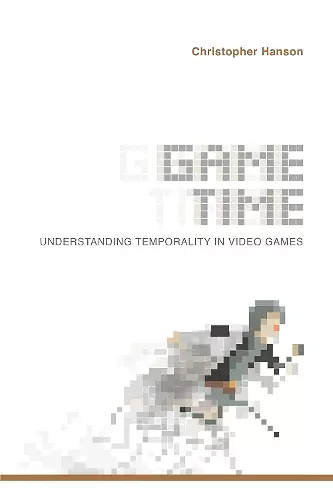Game Time
Understanding Temporality in Video Games
Format:Paperback
Publisher:Indiana University Press
Published:8th Mar '18
Currently unavailable, and unfortunately no date known when it will be back

Preserving, pausing, slowing, rewinding, replaying, reactivating, reanimating Has the ability to manipulate video game timelines altered our cultural conceptions of time?
Video game scholar Christopher Hanson argues that the mechanics of time in digital games have presented a new model for understanding time in contemporary culture, a concept he calls "game time." Multivalent in nature, game time is characterized by apparent malleability, navigability, and possibility while simultaneously being highly restrictive and requiring replay and repetition. When compared to analog tabletop games, sports, film, television, and other forms of media, Hanson demonstrates that the temporal structures of digital games provide unique opportunities to engage players with liveness, causality, potentiality, and lived experience that create new ways of experiencing time
Featuring comparative analysis of key video games titles—including Braid, Quantum Break, Battle of the Bulge, Prince of Persia: The Sands of Time, Passage, The Legend of Zelda: The Ocarina of Time, Lifeline, and A Dark Room.
The text is well-researched, and the introduction is an excellent, focused overview of video game studies. . . . a compelling work. . . . Recommended.
* Choice *While such a combination of viewpoints seems inherent to video game studies,it nevertheless makes this book an equally rich and engaging reading for academics, students, and gamers.
* Projections 14.2 *Hanson cleverly explores how seemingly mundane concepts like the ability to pause, save, or suspend gameplay radically changes our relationship to games and what we are allowed to do with them; however, these technological advancements also lead to the creation of more complex game design in which temporal manipulation becomes part of the player's challenges (or their toolset). Hanson naturally explores speedrunning in Game Time, suggesting that the desire to repeatedly play games in order to find ways to complete them faster or experiment with glitches to "break" the internal programming to do things players are not supposed to do is a means of demonstrating human mastery over the game, turning the act into performance as much as play. Through these and other examples, Hanson's work explores how video games are unique in terms of entertainment media and how interactivity intersects with our very concept of time and space—as Animal Crossing players learned, all it takes is to adjust a clock in the menu to turn today into tomorrow, or three weeks from now
-- Bryan J. Carr * Communication Booknotes QuarterISBN: 9780253032867
Dimensions: unknown
Weight: unknown
296 pages